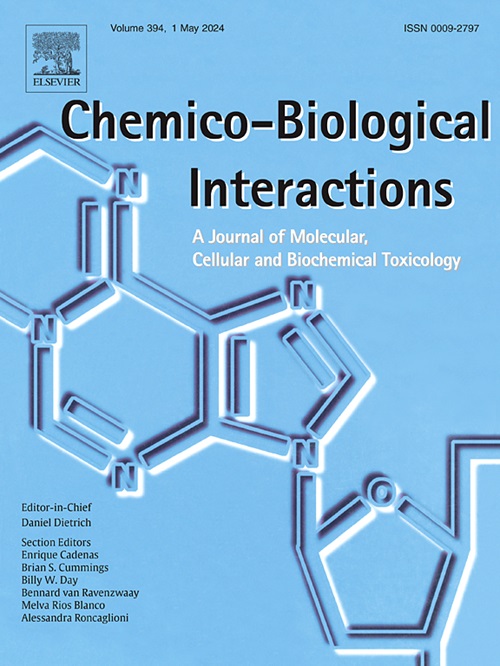Incorporating alkylthio groups provides potent in vitro anticancer activity to water-soluble and aqueous-stable diiron(I) bis-cyclopentadienyl complexes
IF 4.7
2区 医学
Q1 BIOCHEMISTRY & MOLECULAR BIOLOGY
引用次数: 0
Abstract
We synthesized five novel diiron(I) complexes with a varying S-functionalized vinyliminium ligand, 3a-e, which were structurally characterized by IR and NMR spectroscopy, and single crystal X-ray diffraction in one representative case. Based on NMR and UV–Vis methods, these complexes show adequate water solubility (3–19 mM), balanced amphiphilicity (Log Pow values ranging from −0.46 to 0.16), and substantial stability in physiological-like solutions (>90 % unchanged after 24 h in DMEM cell culture medium). The cytotoxicity of the N-cyclohexyl complexes 3a-d was determined on human (A2780, A375, MCF-7) and murine cancer (B16F10, 4T1) cell lines. The leading compound 3d, featuring methylthio-group, N-cyclohexyl and 4-methoxyphenyl substituents, exhibited IC50 values in the low micromolar range and demonstrated remarkable selectivity for malignant phenotypes. Several in-depth experiments were conducted to elucidate the biochemistry of 3d, including evaluation of cell death induction, proliferation rate and cellular redox status. Spectroelectrochemical and binding studies with DNA and bovine serum albumin (BSA) were also conducted. Despite its similarity to cisplatin in inducing apoptosis, the redox signature of 3d is distinct, characterized by a strong scavenging potential of reactive oxygen and nitrogen species (ROS and RNS).
加入烷基硫基对水溶性和水稳定的二铁(I)双环戊二烯基配合物具有有效的体外抗癌活性。
我们合成了五种具有不同s功能化乙烯配体3a-e的新型二铁(I)配合物,并通过红外光谱和核磁共振光谱对其结构进行了表征,并对其中一个具有代表性的案例进行了单晶x射线衍射。基于NMR和UV-Vis方法,这些配合物具有足够的水溶性(3 - 19 mM),平衡的两亲性(Log Pow值在-0.46至0.16之间),并且在生理类溶液中具有相当的稳定性(在DMEM细胞培养基中24小时后> 90%不变)。研究了n -环己基配合物3a-d对人(A2780, A375, MCF-7)和小鼠(B16F10, 4T1)癌细胞的细胞毒性。先导化合物3d具有甲基硫基、n -环己基和4-甲氧基取代基,其IC50值在低微摩尔范围内,对恶性表型具有显著的选择性。我们进行了一些深入的实验来阐明3d的生物化学,包括评估细胞死亡诱导,增殖率和细胞氧化还原状态。还进行了光谱电化学和与DNA和牛血清白蛋白(BSA)的结合研究。尽管其在诱导细胞凋亡方面与顺铂相似,但3d的氧化还原特征是不同的,其特点是活性氧和氮(ROS和RNS)具有很强的清除潜力。
本文章由计算机程序翻译,如有差异,请以英文原文为准。
求助全文
约1分钟内获得全文
求助全文
来源期刊
CiteScore
7.70
自引率
3.90%
发文量
410
审稿时长
36 days
期刊介绍:
Chemico-Biological Interactions publishes research reports and review articles that examine the molecular, cellular, and/or biochemical basis of toxicologically relevant outcomes. Special emphasis is placed on toxicological mechanisms associated with interactions between chemicals and biological systems. Outcomes may include all traditional endpoints caused by synthetic or naturally occurring chemicals, both in vivo and in vitro. Endpoints of interest include, but are not limited to carcinogenesis, mutagenesis, respiratory toxicology, neurotoxicology, reproductive and developmental toxicology, and immunotoxicology.

 求助内容:
求助内容: 应助结果提醒方式:
应助结果提醒方式:


